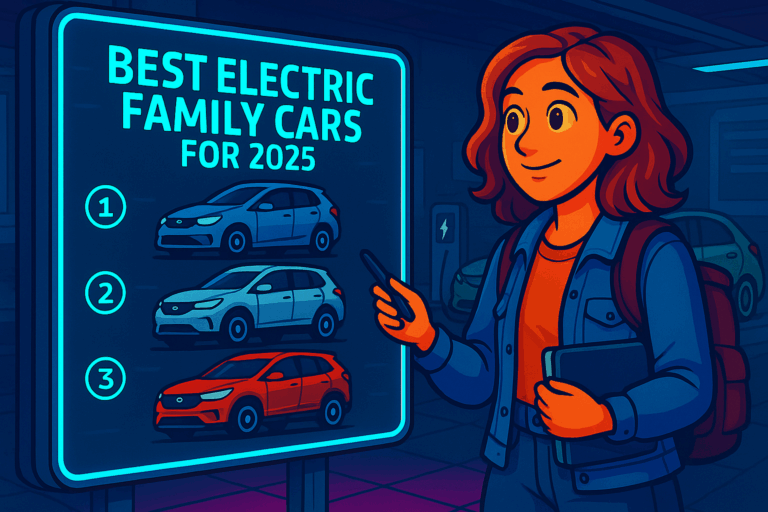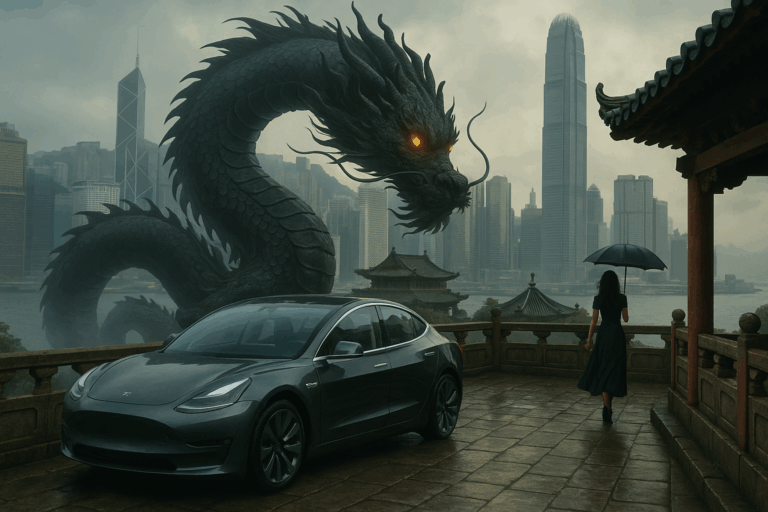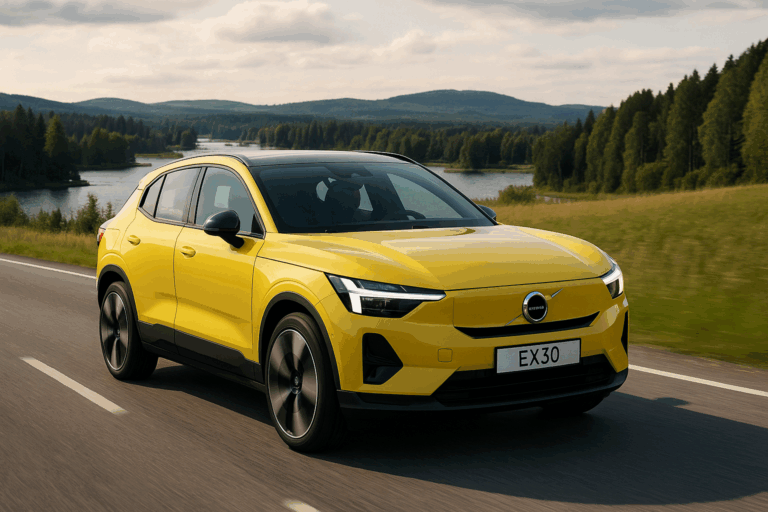Lithuania’s EV Leap: The Electric Cars Lighting Up 2025
Lithuania’s EV journey is more than a trend—it’s a full-blown transition. While battery-electric vehicles (BEVs) still account for a modest slice of the nation’s new car market, the EU-wide surge in EV adoption gives us a clue about what’s unfolding here. Across Europe, BEV sales climbed nearly 24% in Q1 2025, capturing 15.2% of total market share. Lithuania’s EV momentum isn’t as fast-paced, but it’s accelerating—especially amid rising environmental awareness, charging network expansion, and shifting subsidies.

So, which electric models are turning Lithuanian heads? Let’s break it down.
⚡ 1. Volkswagen ID.4 – The Everyday Electric SUV
Across the Baltics, including Lithuania, the VW ID.4 is a clear frontrunner—combining comfort, familiarity, and practicality. It ticks all the boxes: decent range (~340 km WLTP), roomy interior, and a reliable nameplate. That makes it a go-to for families switching from combustion to electric. A safe bet in Lithuania’s growing EV scene.
🌍 2. Škoda Enyaq iV – Spacious Value with Central European Roots
Škoda’s Enyaq iV, built on VW’s MEB platform like the ID.4, brings similar strengths with a slightly Czech twist—affordable pricing, generous space, and smart design. Europe-wide, it’s a top-selling EV, and we can safely assume Lithuania follows suit. Practical buyers appreciate the thoughtful touches: massive boot and heated steering during those Baltic winter days.
🏙️ 3. Volkswagen ID.3 – Compact City Hero
For urban drivers, the ID.3 fits like a glove—compact, efficient, and comfortable. Under €30,000 in core trims and perfect for commuting across Vilnius or Klaipėda’s narrower streets, it’s an attractive entry point. Volkswagen’s brand trust gives it extra appeal among first-time EV buyers.
🚗 4. Tesla Model 3 – Global Power, Local Cool
The Tesla Model 3 shines in Lithuania too. Despite higher cost and fewer home chargers early on, it’s capturing interest for its minimalist interior, long range (~480 km WLTP), and the promise of over-the-air updates. Plus, owning a Tesla in Lithuania comes with a bit of tech‑genius status—subtle flex, electric style.
🚙 5. Hyundai Kona Electric – Korean Reliability with Range Edge
In Northern Europe, the Kona Electric enjoys a fanbase for its ~450 km range, AWD option, and Hyundai’s strong service network. Lithuania’s growing charging infrastructure makes Kona’s range quite practical—it can be the dependable daily driver, ready for longer weekend trips without juice anxiety.
🔋 6. Kia EV6 – Sporty Under the Northern Sky
Kia’s EV6 adds flair to the Lithuanian scene: sharp styling, balanced performance, and fast charging thanks to its 800‑volt architecture. It’s pricier than some entry models, but for those who want an EV that feels as good as it looks—or who do occasional longer trips—it’s an appealing alternative.
💰 7. MG4 EV – Budget-Friendly British-Chinese Surprise
The MG4, a Chinese-made hatchback sold under the British MG name, is making waves across Europe with its zippy handling and sub‑€30K pricing. In price‑sensitive Lithuania, its mix of affordability and decent 300+ km range makes it a contender—especially in urban settings.
🌐 8. BYD Dolphin / Seagull – China’s Small EV Contender
Across Europe, BYD’s small models (known locally as Dolphin and Seagull) are entering markets as low‑cost urban EVs. With a ~300 km range, compact size, and sub-€25K pricing (in some countries), they could carve out niche appeal in Lithuanian city centers—even if sales are just emerging.
🛻 9. Tesla Model Y – The Cool, Compact Electric Crossover
Although full EV adoption in Lithuania is still building, early Tesla Model Y owners in the capital or coastal areas are making statements. Its blend of SUV utility and minimalist interior resonates with tech-forward buyers, while its range (~530 km WLTP) takes anxiety out of longer road trips, even to Riga or Warsaw.
🚐 10. Polestar 2 – Scandinavian Design Meets Baltic Roads
For a taste of Scandinavian flair, the Polestar 2 offers elegant design, strong performance (~540 km range), and a more sustainable image. It’s pricier, yes—but for those seeking luxury rooted in responsible design and open-source software, it’s gaining traction among environmentally minded Lithuanians.
🇱🇹 What Lithuania’s EV Picks Say About Its Market
✅ 1. Practicality & Familiarity Win
Models like the ID.4, Enyaq, Kona, and ID.3 resonate because they strike the right balance of price, range, and trust—essential for a market still growing its EV ecosystem.
🌆 2. Urban Demand Shapes Choices
City-friendly EVs with 300–400 km range dominate. Neighborhood charging works; long-range models appeal to weekend road trips more than daily hauling.
🌍 3. Global Meets Local
Lithuania blends mainstream European models with fresh arrivals—like MG and BYD—signaling openness to alternative value propositions.
⚡ 4. Infrastructure Is Key
Charging availability around Vilnius, Kaunas, and major routes supports the rise of longer-range options (Tesla, EV6), while shorter-range EVs fill urban niches.
📈 Quick Snapshot: EV Market Dynamics in Lithuania
- EU Q1 2025 BEV sales up 23.9%, capturing 15.2% of the new-car market.
- Lithuania’s EV share lagged, still below EU average—though absolute vehicle registrations surged (~34% growth in Q1).
- Subsidy cuts in other Baltic states hint at possible policy shifts—yet BEV adoption keeps steady—it’s not just policy driving it anymore; people want EVs.
- As charging stations pop up across highways and cities, EV convenience is catching up with awareness.
🔮 Forecast: What’s Around the Corner?
- Compact EV Explosion: BYD Dolphin, Seagull, MG4, and VW’s ID.2 baby EV will get hotter as price-sensitive buyers wake up to the feasibility.
- SUV Momentum: ID.4, Enyaq, and Model Y already dominate. Their mix of size and range appeals across the board.
- Luxury Niche Growth: Tesla Model 3/Y and Polestar 2 offer aspirational electric luxury—polished enough for affluent buyers.
- Chinese Brands Making Inroads: Lower price, long-range, high-tech options will expand as BYD and MG deepen local networks.
- Charging Network Creep: Expect more fast chargers and home incentives to support broader model adoption and ease range worry.
💡 Final Take
Lithuania’s EV market in 2025 is a smart blend of reliability, practicality, and emerging tech surprises. Buyers aren’t chasing hype—they’re picking cars that work day to day: comfortable, affordable, and fit for the Lithuanian lifestyle. Urban commuters choose Volt‑equipped hatchbacks; families see SUVs as the natural upgrade; trend-seekers keep an eye on Teslas and Polestars.
So next time an ID.4 glides by on a Vilnius boulevard, or a Polestar whirs through Nida, remember: these aren’t just electric cars—they’re snapshots of a country quietly pivoting into a sustainable, electric-driven future.






